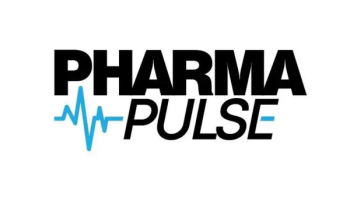
The Great Pharma Reshoring
With potential tariffs reaching 250% and new federal initiatives like SAPIR and most-favored nation pricing reshaping incentives, this explainer explores how major drugmakers are pouring billions into US facilities.
This video was created based on various Pharma Commerce articles:
Today, we are diving into one of the biggest stories in global business, the incredible trend of pharmaceutical manufacturing coming back home to the United States. Now this isn't just happening by accident. It's a massive strategic shift, and it's being driven by a powerful cocktail of new policies, the very real threat of tariffs, and a renewed focus on national security.
So here's how we're going to break it all down. We'll kick things off by looking at the sheer scale of this move. The numbers are pretty staggering. Then, we'll get into the real drivers, both financial and political. After that, we'll look at how the big players are responding with their corporate playbooks. And finally, we'll talk about what this all means for the future of the pharmaceutical supply chain.
All right, to really get a handle on what's going on, you have to look at the money being spent. These aren't just investments. They're basically declarations of a whole new strategic direction. To get a sense of the scale, just look at the capital being put to work. You've got Johnson & Johnson, who's pledged a massive $55 billion over four years to beef up its manufacturing and R&D right here in the US. And they're not alone. AstraZeneca is making a very similar bet, throwing down $50 billion by 2030. The company's even calling it its largest single manufacturing investment anywhere on the globe. And then, when you tack on another $53 billion from heavy hitters like Regeneron and Roche, well, the picture becomes crystal clear.
We are talking about a seismic shift in how capital is being allocated in this industry. So you can see—these are not just a few isolated decisions. This is a fundamental industry-wide strategic pivot. The enormous scale of these investments tells you that the whole equation for global manufacturing has changed. The big question for executives has to be, why? Why is this happening right now?
For so many supply chain executives, it really comes down to one thing. The main catalyst here is a huge financial risk that has completely reshaped the landscape, and that is the threat of some very steep import tariffs. For anyone managing a global supply chain, this is the question. You have to understand the urgency to navigate what's coming. So why commit these billions to domestic facilities at this exact moment? Well, the answer really lies in recent trade policy talks. They've created a totally new risk reward calculation. Suddenly, the potential financial hit for relying on imports has become way too high to ignore—and get a load of this number, 250%.
That represents the potential high-end tariff on pharma imports that's been put on the table. I mean, a levy of that size would be absolutely catastrophic for-profit margins. It makes the financial case for reshoring production incredibly urgent, but, you know, it's a bit more nuanced than that. As supply chain experts point out, if you put a tariff on the raw active pharmaceutical ingredients, the APIs, the impact would probably be manageable. They're a relatively small piece of a drug's total cost. But—and this is a big but—if that same tariff gets slapped on finished goods or key components, like vials, glass enclosures, then the financial impact becomes huge, threatening to disrupt the entire network.
Okay, so tariffs are a massive piece of the puzzle, but they are not the whole story. On top of that financial pressure, there's a whole set of government policies creating this powerful current, basically pulling manufacturing back to US shores and rewarding the companies that make that move. First on the list you have the SAPIR initiative. This executive order takes a direct shot at the supply chain vulnerabilities we've all seen in recent years. It mandates the creation of a national stockpile of essential drug ingredients, and it gives a clear preference to stuff that's produced right here at home. And the context here is just critical.
Think about it, 90% of the active ingredients for US drugs are sourced from outside the country, so the government is creating a really powerful incentive for domestic API production, and we've already seen the industry react to risk. Imports shot up 71% in a single month ahead of potential tariffs. SAPIR is designed to replace that kind of reactive stockpiling with a proactive, stable domestic reserve. And if that wasn't enough, you've also got the most-favored nation pricing policy adding to the pressure. This executive order squeezes revenues by requiring that drug prices in the US get benchmarked against the lowest prices in other developed countries.
This forces companies to rethink their entire global pricing models, which makes controlling costs here at home that much more important. So with all this pressure mounting from every direction, how are companies turning this new reality into action? Well, they're making huge, targeted investments in new and expanded US facilities. You can see a very clear and decisive pattern taking shape. You've got AstraZeneca building a major new API plant in Virginia. Johnson & Johnson is pouring $2 billion into a brand new state-of-the-art facility in North Carolina, nd AbbVie is spending almost $200 million to expand its critical API manufacturing in Illinois. Every one of these investments is a strategic piece in this larger reshoring puzzle.
This quote from the Secretary of Commerce, Howard Lutnick, really frames these corporate moves perfectly. He's making it clear that these investments are a direct response to a stated national goal. The administration sees this reliance on foreign supply as a structural weakness, and these companies are making capital decisions that fall right in line with that policy. And listen, it is not just US companies making these kinds of moves. The South Korean firm Celltrion gives us a really fascinating playbook for how foreign companies are adapting their strategy evolves over time. It starts with short-term stockpiling, moves to midterm partnerships with US contract manufacturers, and then gets to the ultimate long-term solution, just acquiring a large- scale US plant to completely get rid of any future tariff risks.
So what does this all add up to? How are all these investments, policies and strategies going to reshape the future of the pharmaceutical supply chain? The immediate goals are clear and they're ambitious. The end game here is to build a much more resilient domestic supply chain, one that can handle global disruptions. It's about making sure our national health security isn't dependent on foreign suppliers. And, of course, a direct benefit is boosting the domestic economy by creating thousands of new highly-skilled jobs. But, this huge shift, this monumental move to prioritize domestic resilience leaves us with a critical strategic question. As supply chains get shorter and more local, what happens to the global networks that for decades have fueled innovation and efficiency? That is the new calculus. It's the new reality that every leader in this industry now has to consider for the years and decades to come.
Newsletter
Stay ahead in the life sciences industry with Pharmaceutical Commerce, the latest news, trends, and strategies in drug distribution, commercialization, and market access.





